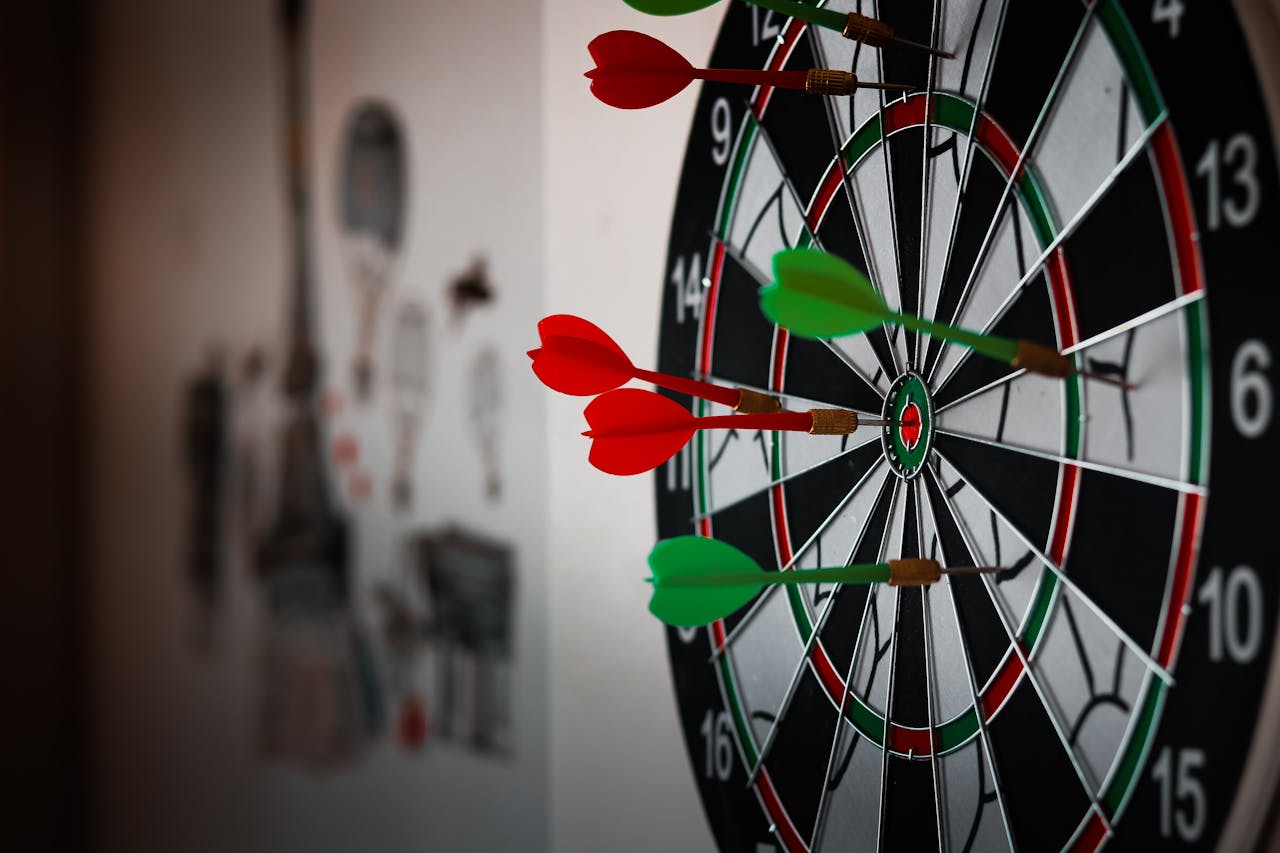Setting goals is more than just a motivational exercise—it’s a scientifically backed method for improving focus, enhancing performance, and leading a more fulfilling life. Whether you’re striving to improve your health, advance in your career, build better relationships, or expand your knowledge, effective goal setting serves as the compass that directs your energy and actions.
Yet, while millions of people set goals every year, a startling majority abandon them within months. According to research by the University of Scranton, only about 8% of people achieve their New Year’s resolutions. Why? Because most goals are vague, misaligned with deeper values, and unsupported by structured strategies.
This article provides a deep dive into goalsetting strategies that work—techniques proven by psychology, productivity science, and real world success stories. By the end of this piece, you’ll be equipped with actionable tools to set, track, and accomplish your most meaningful personal and professional goals.
THE PSYCHOLOGY BEHIND GOAL SETTING
Why Goals Matter?
Human beings are inherently goal driven. From the time we learn to walk and talk, our brains are wired to seek achievement and progress. Goals provide:
- Direction: They offer a sense of purpose and guide our daily decisions.
- Motivation: They fuel the desire to act and persist through challenges.
- Measurement: They allow us to track progress and celebrate milestones.
Psychologists like Edwin Locke and Gary Latham have extensively studied goal setting and found that specific and challenging goals lead to higher performance than easy or vague ones. Their goal setting Theory highlights five key principles:
1. Clarity
2. Challenge
3. Commitment
4. Feedback
5. Task Complexity
COMMON GOAL SETTING PITFALLS
Before diving into the techniques, it’s important to recognize common mistakes that sabotage goal setting:
- Setting vague or overly broad goals (“I want to get better at work”)
- Failing to write goals down
- Lack of deadlines
- No system for accountability
- Overlooking emotional connection or deeper purpose
- Neglecting to track progress or reflect on setbacks
Understanding these pitfalls prepares you to adopt strategies that actually stick.
SMART GOALS – THE GOLD STANDARD
The SMART framework is one of the most widely used goalsetting tools, originally developed by George T. Doran in 1981. A SMART goal is:
- Specific: Clear and precise.
- Measurable: Quantifiable or trackable.
- Achievable: Realistic and attainable.
- Relevant: Aligned with broader objectives or values.
- Time bound: Has a deadline or schedule.
Example:
Vague goal: “I want to be healthier.”
SMART goal: “I will walk 30 minutes a day, 5 days a week, for the next 3 months.”
SMART goals work because they translate dreams into actionable targets.
SETTING GOALS THAT ALIGN WITH YOUR VALUES
The power of values based goals
Values are the principles and beliefs that matter most to you—like honesty, creativity, security, or adventure. Goals grounded in personal values are more motivating and sustainable because they resonate with your deeper identity.
How to discover your core values
- Reflect on moments in life when you felt most proud or fulfilled.
- Identify role models and what you admire in them.
- Use tools like the Personal Values Assessment.
Once you know your top 5–10 values, ask:
“Does this goal reflect who I truly am or want to become?”
When goals align with values, discipline becomes devotion.
THE WOOP METHOD – MENTAL CONTRASTING
Created by psychologist Gabriele Oettingen, WOOP is a powerful tool to bridge dreams and reality:
- Wish – What do you want?
- Outcome – What’s the best possible result?
- Obstacle – What’s in your way (internal or external)?
- Plan – What will you do when obstacles arise?
Example:
Wish: Publish a book
Outcome: Feel proud, help others, build a personal brand
Obstacle: Procrastination, selfdoubt
Plan: “If I feel stuck, I’ll write for just 10 minutes.”
WOOP helps build mental resilience and realistic action plans.
TIME MANAGEMENT AND GOAL EXECUTION
A technique where you assign specific time slots to tasks on your calendar. It increases focus and prevents procrastination.
1. The 90 day goal cycle
Break your annual goals into quarterly cycles:
- Set 13 key goals per quarter
- Review weekly
- Reflect monthly
Shorter timelines boost urgency and adaptability.
2. The Two minute rule
From David Allen’s Getting Things Done:
“If a task takes less than two minutes, do it now.”
This principle builds momentum and prevents mental clutter.
TOOLS FOR TRACKING AND ACCOUNTABILITY
1. Journals and planners
- Bullet journal method
- full focus planner
- best self-journal
2. Apps
- Trello/Asana – Visualize tasks and deadlines
- Habitica – Gamify your habits
- Notion – Customize goal dashboards
3. Accountability Systems
- Accountability partners
- Mastermind groups
- Weekly check ins with a coach
When someone else is watching, your likelihood of follow through increases significantly.
VISUALIZATION, AFFIRMATION, AND MINDSET SHIFTS
1. Visualization
Elite athletes use mental imagery to enhance performance. The same applies to goalsetting:
- Visualize your goal daily.
- Picture not just success, but the process.
- Include sensory details: sights, sounds, emotions.
2. Affirmations
Repeat empowering statements aligned with your goals:
- “I am capable of achieving great things.”
- “Every day, I’m growing stronger and more focused.”
3. Growth vs. fixed mindset
From Carol Dweck’s research:
- Fixed mindset: “I’m not good at this.”
- Growth mindset: “I can improve with effort.”
Shifting your mindset transforms obstacles into opportunities.
BALANCING PERSONAL AND PROFESSIONAL GOALS
Goals shouldn’t exist in isolation. Effective life design integrates multiple domains:
- Career – Advancement, skillbuilding, entrepreneurship
- Health – Physical fitness, mental wellbeing
- Finance – Budgeting, saving, investing
- Relationships – Family, friendships, community
- Personal Growth – Reading, spirituality, learning
- Recreation – Travel, hobbies, creativity
Use a Life Wheel or Balanced Scorecard to visualize areas needing attention.
OVERCOMING SETBACKS AND STAYING MOTIVATED
Setbacks are not failures—they are feedback. Here’s how to manage them:
- Reframe: Ask “What can I learn?” instead of “Why me?”
- Micro goals: When overwhelmed, break goals into 10minute actions.
- Reward Progress: Celebrate small wins to boost morale.
- Change the Approach: If a strategy isn’t working, pivot without abandoning the goal.
Motivation fluctuates, but discipline, systems, and vision keep you going.
Conclusion: Design the life you desire
Effective goal setting is a lifelong skill that separates intention from action and hope from achievement. With the strategies in this article—from SMART goals to WOOP, time blocking to value alignment—you are now equipped to set meaningful goals and actually achieve them.
Remember:
- Start small, but think big.
- Write it down, visualize, and commit.
- Review regularly, and adjust with compassion.
- Celebrate your journey—not just the destination.
As author Tony Robbins said:
“Setting goals is the first step in turning the invisible into the visible.”



